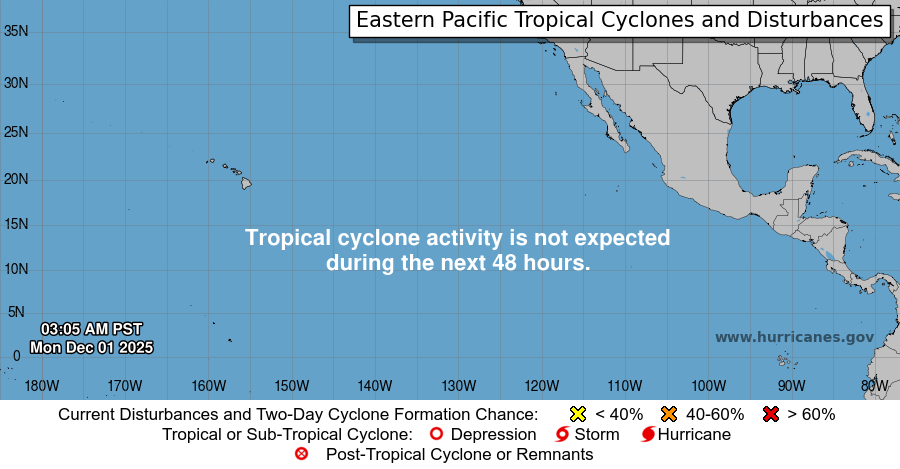These are terms used to describe the progressive levels of organized disturbed weather in the tropics that are of less than hurricane status.
Tropical Disturbance
A discrete tropical weather system of apparently organized convection - generally 200 to 600 km (100 to 300 nmi) in diameter - originating in the tropics or subtropics, having a nonfrontal migratory character, and maintaining its identity for 24 hours or more. It may or may not be associated with a detectable perturbation of the wind field. Disturbances associated with perturbations in the wind field and progressing through the tropics from east to west are also known as easterly waves .
Tropical Depression
A tropical cyclone in which the maximum sustained wind speed (using the U.S. 1 minute average standard) is up to 33 kt (38 mph, 17 m/s). Depressions have a closed circulation.
Tropical Storm
A tropical cyclone in which the maximum sustained surface wind speed (using the U.S. 1 minute average standard) ranges from 34 kt (39 mph,17.5 m/s) to 63 kt (73 mph, 32.5 m/s). The convection in tropical storms is usually more concentrated near the center with outer rainfall organizing into distinct bands.
Hurricane
When winds in a tropical cyclone equal or exceed 64 kt (74 mph, 33 m/s) it is called a hurricane (in the Atlantic and eastern and central Pacific Oceans). Hurricanes are further designated by categories on the Saffir-Simpson scale. Hurricanes in categories 3, 4, 5 are known as Major Hurricanes or Intense Hurricanes.
The wind speed mentioned here are for those measured or estimated as the top speed sustained for one minute at 10 meters above the surface. Peak gusts would be on the order of 10-25% higher.
The Eastern Pacific hurricane season runs from May 15th through November 30th.
2 day outlook
5 day outlook



